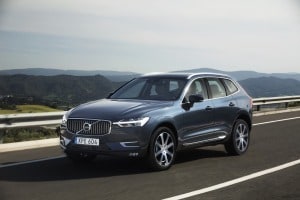The Difference between Car Shoppers Visiting Third-Party Websites vs. Dealer Sites

Why in the world would a dealer want to work with a third-party website? Doesn't every customer who goes online eventually end up on a dealer website anyway? The answer may surprise you.
Studies show that third-party sites generally attract a larger and largely different audience than dealer sites. For example, a recent study found that, in any given area of the country, Edmunds attracts considerably more local visitors than the average dealer site does. Moreover, only a limited number of visitors on any given dealer site are also on Edmunds, indicating that a different kind of customer is attracted to a dealer site versus a third-party site.
What this means: popular third-party websites deliver promising conquest opportunities for dealers looking to grow their businesses.
Third-party websites draw engaged, in-market shoppers seeking new and used vehicles. According to Google Analytics, 35 percent of Edmunds sessions are shoppers in market for a new car and 50 percent are shoppers in market for a used car, roughly mirroring the new-used sales breakdown. What's more, these shoppers are actively preparing for purchase.
- Shoppers spend three times longer on Edmunds than on dealer sites and view twice as many pages.
- Over 70 percent of Edmunds visitors research a specific vehicle, examining pricing, reviews, features and specs, photos, and other details. Viewing inventory, using tools to appraise or calculate payments and reading advice articles are other popular activities.
- When Edmunds visitors view inventory, they are more likely to engage with specific VINs, targeting the actual vehicle they want to buy, than visitors on dealer sites.
- Edmunds' research finds that both its wired and mobile sites attract serious shoppers, with shoppers choosing a platform based on their current location and car-shopping activity.
Third-party website audiences also over-index on key desirable demographic cohorts, such as above-average income earners and Millennials.
- For example, Edmunds' audience skews affluent with 61 percent of Edmunds visitors from households earning over $75,000 per year, compared to just 36 percent of the U.S. population. Higher income generally translates into a better ability to afford a new car and to qualify for financing.
- Edmunds' audience also skews Millennial, the large up-and-coming generation aged roughly 18-34. According to Google Analytics, 38 percent of Edmunds sessions are by Millennials, compared to just 31 percent of the U.S. population. These visitors are particularly active on Edmunds' mobile site, accounting for 55 percent of sessions there versus 26 percent of wired site sessions. For dealers interested in attracting these car buyers of the future, a third-party site is a good place to reach them.
Many third-party sites cater to used car shoppers, attracting sizable groups of these shoppers who typically generate higher profits for dealers than new car shoppers. On Edmunds, used car shoppers make up 38 percent of the wired audience and 53 percent of the mobile audience. While most used car shoppers only view used car content, there is also a very active sub-group researching both new and used vehicles. Edmunds used car shoppers are most interested in vehicles less than five years old, making them a great audience for dealers selling CPO vehicles.
As dealers look for effective ways to make new connections with car shoppers, innovative third-party websites should be top of mind.
Lacey Plache is the Chief Economist for Edmunds.com. Follow @AutoEconomist on Twitter.





